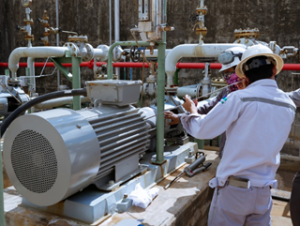Spiritual entrepreneurs might have read the title of this post and assumed it contains information on opening chakras and clearing chi — but, unfortunately, that’s not the case. Outside the spiritual realm, vibration monitoring is, well, the process of monitoring vibrations. Vibrations can be exceedingly dangerous to various types of equipment and other delicate products, and identifying the source of harmful vibrations and working to cease them is a key step in some business management.
Entrepreneurs, spiritual or no, need to monitor any vibrations affecting their business and products. Here’s how.
Harmful Vibrations
Bad vibes aren’t just entrepreneurial instinct direction business decisions; they are incredibly destructive forces that will render delicate and complex equipment useless if not appropriately addressed.
Harmful vibrations are the result of mechanical resonance, a phenomenon in which a machine produces vibrations of a certain frequency that cause elements of that machine (or nearby machines) to vibrate in kind. The concept of resonance is best recalled through the image of an opera singer shattering a crystal glass: The singer’s vocal cords are creating vibrations at a frequency that causes the glass to vibrate at a high intensity, which causes the glass to break apart.
Devices and machines might not shatter like crystal, but resonance can cause bolts to come unscrewed, panels to warp, and other elements to shift and change. Often, mechanical resonance results in inefficiencies that can wear down equipment prematurely or require costly energy investment. However, some mechanical resonance causes devices to become decalibrated, which can result in small but significant deviations from the expected outcome. If this decalibration goes unnoticed, catastrophe usually ensues.
Typically, machines themselves cause the dangerous vibrations that threaten to shake them apart. However, sometimes, vibrations come from outside sources. For example, transportation of devices can often result in resonance, as the motion of planes, trains, ships, and trucks cause their cargo to resonate.
Unfortunately, there is no eliminating harmful vibrations entirely. Business leaders cannot eradicate resonance or dispel frequencies by force of will; it is a physical phenomenon present in every bit of matter on Earth. Yet, mechanical resonance doesn’t have to be a death sentence for business equipment. There are several ways to mitigate dangerous frequencies, such as increasing mass or adding insulation to dampen the vibrations. Still, resonance will likely occur — and a business’s best chance of addressing it is through monitoring.
Related posts:
- What To Wear To A Job Orientation?
- How Long Is Orientation At Walmart?
- Do You Get Paid For Job Orientation?
Good Vibes Only
 Engineers employ a number of tools for vibration monitoring to include sensors, recorders, meters, and more. Some of the most experienced engineers can differentiate between safe and dangerous vibrations through their bodies, but for more precise measurements of frequencies and more scientific tracking procedures, they need these tools.
Engineers employ a number of tools for vibration monitoring to include sensors, recorders, meters, and more. Some of the most experienced engineers can differentiate between safe and dangerous vibrations through their bodies, but for more precise measurements of frequencies and more scientific tracking procedures, they need these tools.
Here are a few different varieties of sensors, used for different types of measurements and different types of machines:
- Accelerometer. Used for both vibration and shock measurement, accelerometers tend to be inexpensive and accessible tools for basic monitoring.
- Gyroscope. When orientation matters to a machine, gyroscopes are essential components of vibration monitoring tools, typically used in conjunction with accelerometers.
- Microphone. Because sound is vibration, microphones are employed to record those vibrations on the audible spectrum — but they are limited in collecting frequency and cannot detect acceleration.
- Strain gauge. Strain gauges measure the strain on a system, particularly when size and mass are important, but cannot measure acceleration.
- Velocity sensor. Though difficult to procure, velocity sensors are excellent for high-temperature applications, but for regular applications, accelerometers are preferred.
- Laser displacement. Lasers allow for the measurement of vibration without contact with the machine, which can be exceedingly advantageous.
- Vibration meter. This simple, mobile vibration monitoring device provides fast and shallow information about vibrating machinery.
- Vibration data logger. Another mobile-ready tool, a logger, is similarly fast and inexpensive, making it ideal for readings on-the-go.
Entrepreneurs themselves shouldn’t be tasked with purchasing vibration monitoring tools or using them unless they have a background in physics and/or engineering. However, it is critical that entrepreneurs understand that any large machinery or delicately calibrated devices used by their businesses must be subject to resonance tests. Consulting with engineers experienced with vibration monitoring and utilizing appropriate tools and services will go a long way toward protecting a business’s investments and enhancing profitability in the long term.
